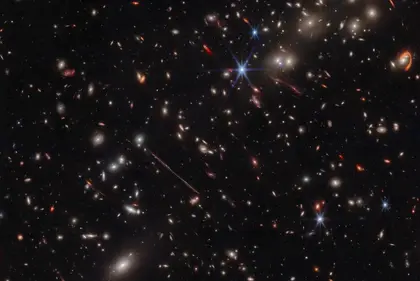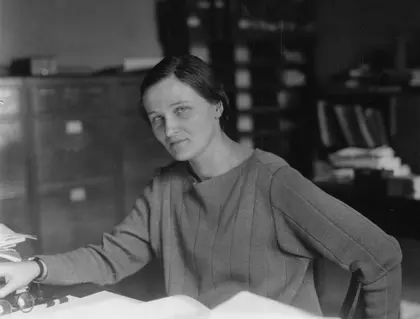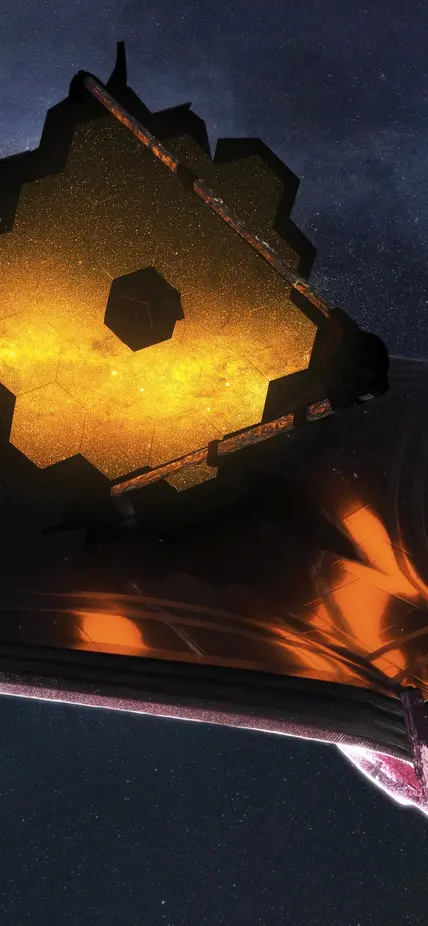Pasadena, CA—Galaxies that formed just 2 to 3 billion years after the Big Bang are unusually hot and glow with light from surprising elements, like nickel, according to new work led by Carnegie’s Gwen Rudie and Northwestern University’s Allison Strom. Studying “teenage galaxies” from the ancient universe can teach scientists about how these massive systems of stars mature and evolve.

Their findings, published in The Astrophysical Journal Letters, are part of the CECILIA (Chemical Evolution Constrained using Ionized Lines in Interstellar Aurorae) survey, developed by Rudie and Strom—a former Carnegie postdoc. Last July, they pointed JWST at 33 specially selected ancient galaxies whose light traveled more than 10 billion years to reach us and stared with the new telescope for more than a day, providing the most detailed view of these early galaxies yet captured.
In the universe’s youth, many galaxies, including the 33 chosen for this study, experienced a period of intense star formation. Today, some galaxies, such as our own Milky Way, still form new stars, albeit not as rapidly. Other galaxies have stopped forming stars altogether. This new work can help astronomers understand the reasons behind these different trajectories.
“We’re trying to understand how galaxies grew and changed over the 14 billion years of cosmic history,” said first author Allison Strom. “Using the JWST, our program targets teenage galaxies when they were going through a messy time of growth spurts and change. Teenagers often have experiences that determine their trajectories into adulthood. For galaxies, it’s the same.”
The CECILIA team studied the spectra from these distant galaxies, separating their light into its component wavelengths, just as a prism spreads sunlight into the colors of the rainbow. Looking at the light in this way helps astronomers measure the temperature and chemical composition of cosmic sources.
“We averaged together the spectra from all 33 galaxies to create the deepest spectrum of a distant galaxy ever seen—which it would take 600 hours of telescope time to replicate,” Rudie explained. “This enabled us to create an atlas, of sorts, that will inform future JWST observations of very distant objects.”
Using the spectra, the researchers were able to identify eight distinct elements: Hydrogen, helium, nitrogen, oxygen, silicon, sulfur, argon and nickel.
“These elements existing in these galaxies is not a surprise, but our ability to measure their light is unprecedented and shows the power of JWST,” said Rudie.

All elements that are heavier than hydrogen and helium form inside stars. When stars explode in violent events like supernovae, they spew these elements out into the cosmic surroundings, where they are incorporated into the next stellar generation. So, by revealing the presence of certain elements in these early galaxies, astronomers can learn about how star formation changes over the course of their evolution.
The CECILIA team were surprised by the presence of nickel, which is particularly difficult to observe.
“Never in my wildest dreams did I imagine we would see nickel,” Strom said. “Even in nearby galaxies, people don’t observe this. There has to be enough of an element present in a galaxy and the right conditions to observe it. No one ever talks about observing nickel. Elements have to be glowing in gas in order for us to see them. So, in order for us to see nickel, there may be something unique about the stars within the galaxies.”
"JWST is still a very new observatory," added co-author Ryan Trainor of Franklin & Marshall College. "Astronomers around the world are still trying to figure out the best ways to analyze the data we receive from the telescope."
Another surprise: The teenage galaxies were extremely hot. By examining the spectra, physicists can calculate a galaxy’s temperature. While the hottest pockets with galaxies can reach over 9,700 degrees Celsius or 17,492 degrees Fahrenheit, the teenage galaxies clock in at higher than 13,350 degrees Celsius or 24,062 degrees Fahrenheit.
“We expected these early galaxies to have very, very different chemistry from our own Milky Way and the galaxies that surround us today,” Rudie said. “But we were still surprised by what JWST revealed.”

The project was named in honor of Cecilia Payne-Gaposchkin, who did pioneering work on the chemistry of our Sun nearly 100 years ago. Her findings upended the scientific community’s understanding of the Sun’s composition, and she faced unfair criticism for years before her breakthrough work was finally recognized.
“Naming our JWST survey after Cecilia Payne was intended to pay homage to her pioneering studies of the chemical makeup of stars. Allison and I recognize that our own work revealing the chemistry of these very early galaxies is built upon her legacy.” Rudie said.
CECILIA was the first of six initial JWST projects led by Carnegie and Carnegie-affiliated astronomers selected to make observations using the incredible space telescope. Earlier this year, another four Carnegie-led initiatives were chosen for the second cycle of JWST time allocations.
Acknowledgments
This work was supported by NASA, the Pittsburgh Foundation and the Research Corporation for Scientific Advancement.
The data were obtained from the Mikulski Archive for Space Telescopes at the Space Telescope Science Institute and from the W.M. Keck Observatory.
